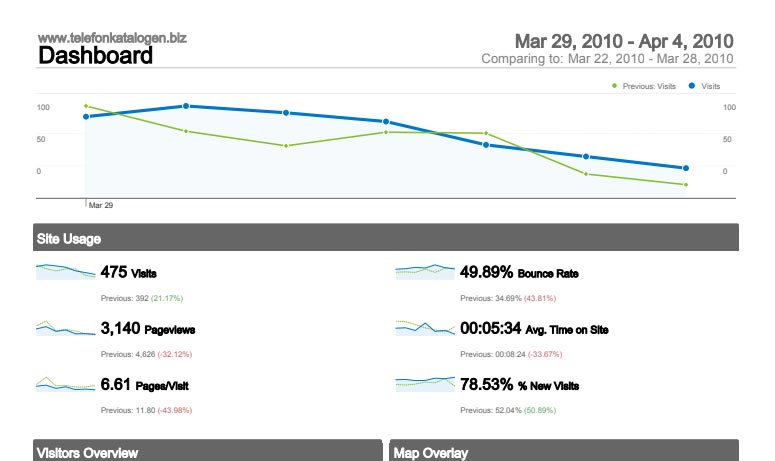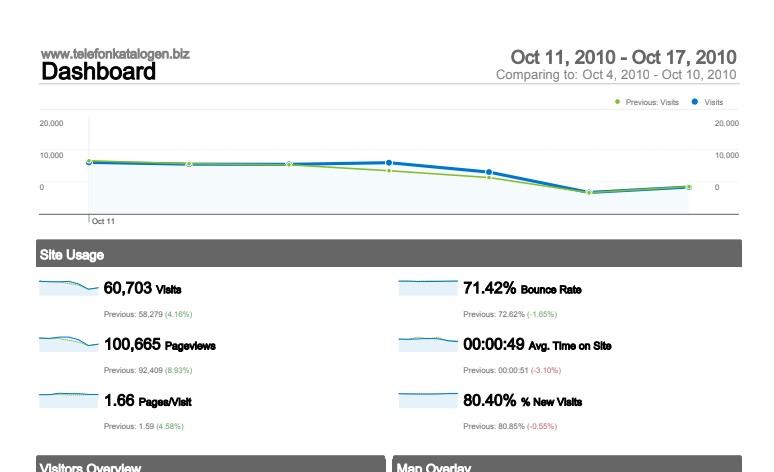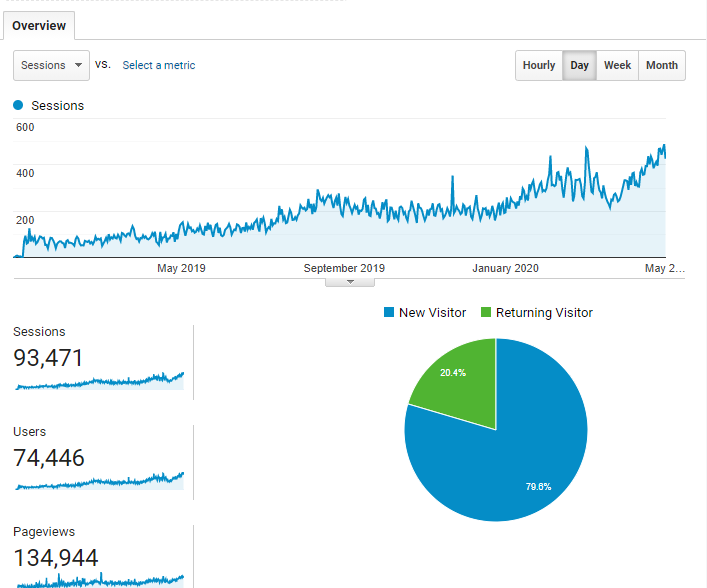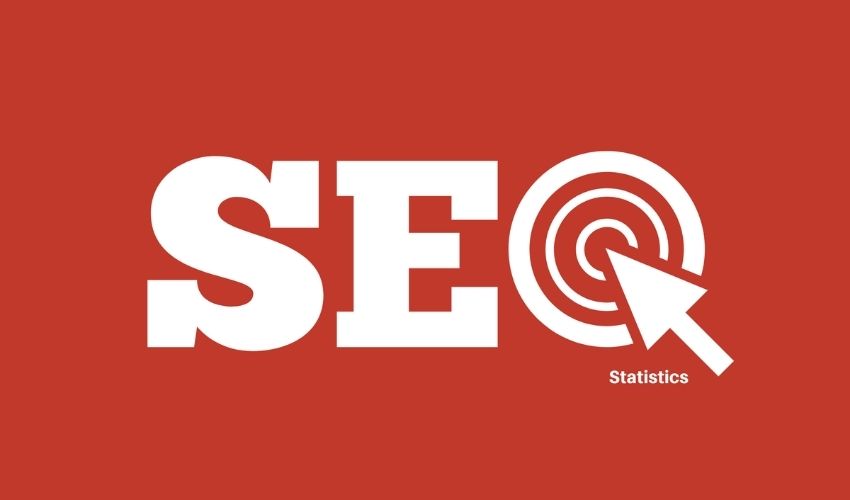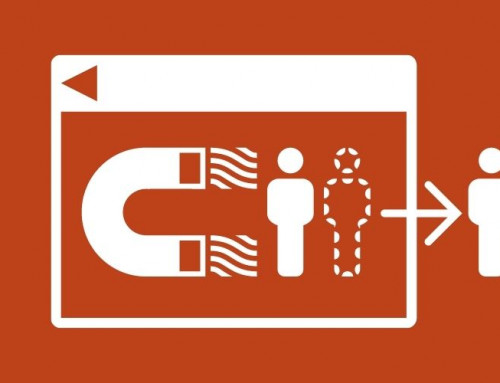Table of Contents
1. In 2020, Google accounted for over 69 percent of all worldwide desktop search traffic, followed by Bing in 13.41%, Baidu in 12.83 percent, and Yahoo in 2.07%.
(Source: NetMarketShare)
To succeed online, you need SEO statistics, facts and numbers ,and to play by Google’s rules.
Using Google Search Console can help you recognize how people are now getting to you through Google Searches.
Google’s strength can not be refused in the search engine group. Keeping up with Google Algorithm changes ensures you will stay nimble and will make crucial changes when they are needed.
2. Google has received almost 2.3 trillion searches this year.
(Source: Internet Live Stats)
People are googling and searching…a lot.
In actuality, customers now do as much as 70 percent of the buying research online before they ever become a sales conversation.
Ranking well in search engines empowers your buyers to easily research in their own whilst spending some time learning about your on your terms.
Prioritizing SEO gives you the capability to do what you can to ensure that your company appears first during those 2+ trillion hunts.
3. Of the billions of searches that occur on a particular day, 15 percent of daily searches are new to Google.
It’s important to not forget that SEO is not just about competing with other people trying to rank for the present terms. With so many new hunts occurring daily, SEO is as much about getting found for new keywords as it’s for what’s already common.
How do you optimize and rank for something new?
To put it differently, BERT looks at the context and intent of tales in a set. So once you write planning to educate on a particular topic, BERT is a neural network-based technique and knows what you are doing and rewards you for this.
4. On the first page , the first five organic results accounts for 67.60% of all of the clicks.
(Source: Zero Limit Web)
Sure, your webpage analytics tools will show you exactly what you are rank for on pages two through 10, but this stat indicates it is great to be on top. With over two-thirds of clicks moving into the first five organic results, the competitive area is harder than ever. Entrepreneurs have to be educated, creative, and a little bit lucky to gain that prime property.
5. Google’s search algorithm uses over 200 variables to rank sites.
(Source: Backlinko)
Backlinko has done an exceptional job of maintaining this record up-to-date, and it’s comprehensive. Nevertheless, there’s so many quite obvious and low-hanging fruit on the search engine optimization tree. That is according to Andrey Lipattsev, Hunt Quality Senior Strategist in Google.
6. Quality content
(Source: Search Engine Watch)
It has always been a factor toward gaining traffic and rank for your site/page, so it is one thing we could expect to stay the same for the near future.
Focus on high quality content over quantity of content. This will help your buyer view you as a trusted authority in your space. This also helps competitors or others in your business see your site as valuable and worth coming to. Prior to printing, discuss your work with others in the business or with your clients to make certain you’re spending some time on valuable content.
7. 57 percent of advertising executives say on-page content creation has been the most effective search engine optimization tactic.
(Source: Content Marketing Institute)
On-page content goes much further than just providing a wealth of information and key words, however. This is the reason the average length of rank content is getting longer each year.
8. The normal content length of the best position Google article comprises 2,416 words.
(Source: SerpIQ)
- How long does great content have to be?
- Long enough to fully answer your visitors’ questions.
- But if you want your great content to rank well in the engines, aim for the 2,000+ word mark.
- The more backlinks you will receive.
Tempted to keep your stories short so that you do not scare off readers that will not stick around to read a long article? You are probably doing more damage than good.
9. 91 percent of all pages never get any organic traffic from Google, mostly because of the fact they do not have any backlinks.
(Source: Ahrefs)
While the term count factored into the way the website ranks, it is the backlinks which matter more.
10. 55.24% of pages do not have one backlink.
(Source: Ahrefs)
That same study mentioned in the state above highlights more than half of the pages does not have one backlink. And another 30 percent have three or fewer backlinks.
11. The more backlinks a webpage has, the more search traffic it receives from Google.
In a study of almost 1 billion web pages, Ahrefs found that the more traffic you received, so did the number of referring backlinks/domains.
What is the correlation?
They will reward your effort with a connection and, in the process, raise your ranking on the way.
12. The top four ranking factors are visits, time on website, pages visited per session, and finally bounce rate.
(Source: SEMrush)
According to SEMrush’s research on rank things, long, quality content and internal linking will also be weighted heavily when it has been found by Google.
But top-notch writing is only going to get you so far.
If you would like your visitors to stay on your website, you will need to think about their requirements, not only about the content you supply but how they navigate through content also. This is known as technical SEO, and it only as big of a factor as on-page components.
13. In September 2020, 50.21 percent of all global online traffic came from mobile, 47.17 percent from desktop, and 2.62 from tablet.
(Source: StatCounter)
Before you change everything to mobile, it is vital to check at the analytics special to your website. These are international stats and might not represent what’s happening in your next of those cyber forests.
Having said that, even though desktop might have the advantage for your website, you still have to be mobile-friendly in the event that you would like to compete regionally, nationally, and internationally.
Additionally, the array of device sizes means it is essential for your site to be responsive, rather than only having one fixed size for cellular.
14. 36% of search engine optimization experts think the headline/title label is the most critical search engine optimization element.
(Source: Databox)
It is tempting to spend the majority of your time crafting the perfect copy for a post than to only want to proceed. As a result of this, we have a tendency to deal with the headline as an afterthought.
That is a mistake, according to the vast majority of search engine optimization experts surveyed recently.
Your headline won’t only allow the search engines know what you are writing about, but there is a good chance it will appear across social media feeds, in newsletters, and in most of the traffic you will receive.
Your audience is only going to click within that headline if it is appealing enough to catch their attention.
Then, workshop your name with colleagues and colleagues.
15. Long-tail keyword searches have a click-through rate 3% to 5% higher than generic searches.
(Source: Smart Insights)
When most searchers are not seeking out one- and – two-word keywords, they are searching phrases which are four words or more.
- They’re looking for particulars.
- Your content should reflect this.
There is unique intent with all them, and the consumer anticipates further, more specific, and more updated content since the key word becomes longer.
Consider The Big five queries that your buyers are asking.
If you want to rank for the keyword “SEO strategy”, then you might use one of these long tail terms.
How to create an Search Engine Optimization strategy
What is an search engine optimization strategy?
What are the advantages of an search engine optimization strategy?
How do I get more traffic?
How much does an search engine optimization strategy cost?
16. 70 percent of entrepreneurs see SEO as more important than PPC.
(Source: Databox)
Marketers found SEO to be a long-term plan, while PPC permitted for short-term bursts.
Despite stat #16, the capability to turn a profit from committing ad spend in Google Search is unquestionably there.
Those entrepreneurs who see SEO as the stronger strategy should not necessarily count out compensated campaigns entirely.
17. 61 percent of marketers say enhancing SEO and developing their natural presence is their best inbound marketing priority.
(Source: HubSpot State of Inbound)
Due to inbound marketing and SEO, more entrepreneurs are dedicated to improving their rank over other tactics.
18. “Where to buy” + “near me” mobile queries have grown by over 200% in the past two years.
(Source: Google)
Local search engine optimization tactics are important for smaller companies. It may not be blogging or developing a bunch of content. Ensure that your website is in the right registries, and all your information is current.
If your site isn’t optimized for local or mobile search, it won’t appear in search results. Those regional customers will not be visiting your shop.
19. 72 percent of customers who did a local search visit a shop within five miles.
(Source: WordStream)
To the point above, of these raised”near me” hunts, those folks actually visited the shop. Not only will you appear in search, but they are more likely to appear to your shop.
20. Updating and republishing old blog articles with fresh content and graphics can raise organic traffic by up to 106%.
(Source: HubSpot)
If you have had content that has been sitting around for a little while, historical optimization might just become your new best friend.
If you have got a solid baseline and were ranking for key words well with older posts, this is the best tactic to return to your 2020 strategy.
21. Image search returned 22.6% of search queries on Google.
(Source: Moz)
Are pictures becoming the keywords? The information certainly supports this.
When you haven’t started already, it is time to construct a strategy. To include visual research in your arsenal, starting with prioritizing schema markup and metadata.
Key takeaways for your 2020-2021 SEO strategy
Marketers are spending more money and time on SEO, so the competition for the top spots will become even more competitive.
Providing value to your client remains the best approach to rank in search engines.
So, keep writing quality articles and designing top-notch consumer experiences.
Mobile is increasingly becoming a bigger factor in ranking, particularly in regards to local marketing.
Performing a technical search engine optimization audit is a beneficial way to hone your strategy.
There is so much to consider when creating an search engine optimization strategy, particularly when so much is changing year to year.
Staying up-to-date on SEO data and working their information into your strategy may set you up for a long term roadmap.
In the wake of Google’s recent algorithm changes, businesses are scrambling to keep up.
The number one takeaway is this: don’t be scared to shared and publish your most valuable content for free! You get paid for the value you provide in the marketplace; not the length of your articles!
Share This Story
